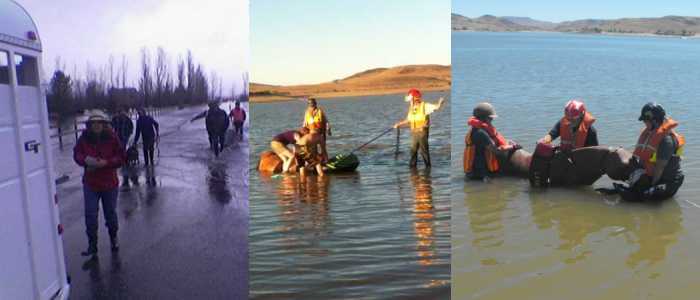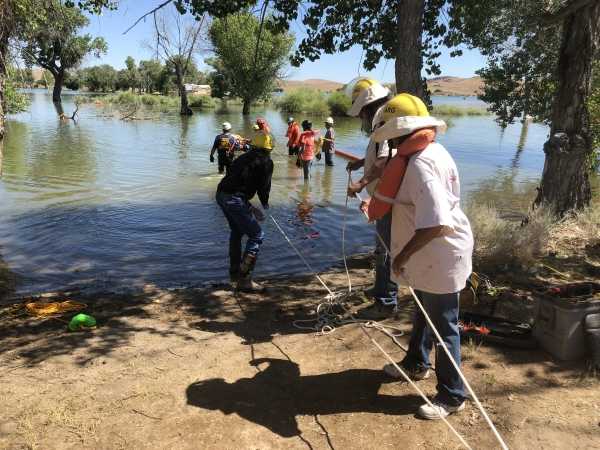|
This sheet is a continuation from Part One in which the context of the information being provided and safety issues are discussed.
Note: These suggested procedures are not intended to be applicable for swift water incidents.
In many instances a horse will attempt to rise and self-extricate once it senses that it has sufficient footing. Such an attempt may or may not be successful. In a public place, civilians tend to crowd around as the horse approaches shore. Rescuers must maintain control over the horse's head and also deal with the crowd, if possible.
Civilians need to be warned away as the horse could "fish flop," knocking people over on its dorsal side and flailing with its hooves. If the horse does get onto its feet, it may want to immediately leave the water and not care much about bystanders.
A draft horse falls over during an attempt to rise at a public lake.
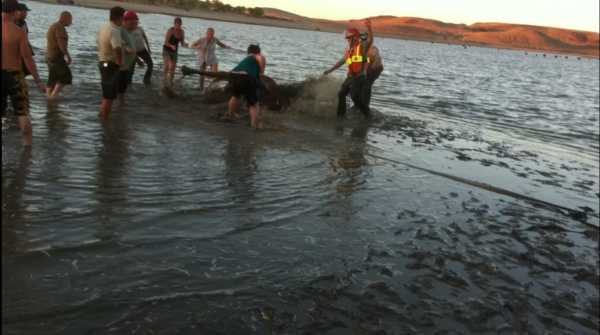
Except for "swim outs," most often the horse will be exhausted and will need to be moved to a location a safe distance away from the water for recovery or be packaged for transport, as may be warranted.
When "landing" a horse that is not going to be packaged for transport, the horse should be moved across slip sheets or ground pads to prevent abrasion. (Slip sheets and ground pads are particularly critical on rocky shorelines.)
Treat for exposure and expect the horse to want to rise and leave once it's regained sufficient strength.
For cold weather and ice rescues, proper practices to address hypothermia may be critical.
Blanketing a wild range mare rescued from the muddy bog presented in the previous page.
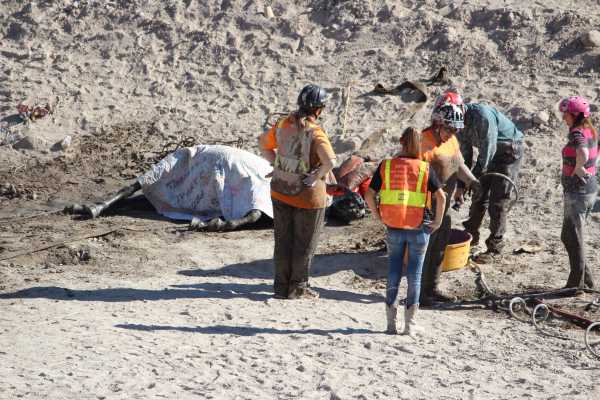
Once rested, the horse gets up on her own.
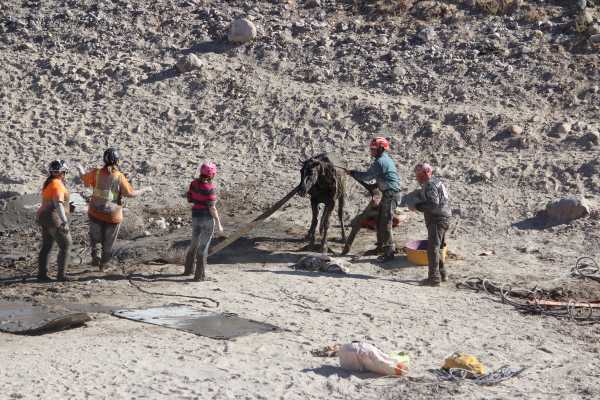
The mare walking away, in search of her herdmates.
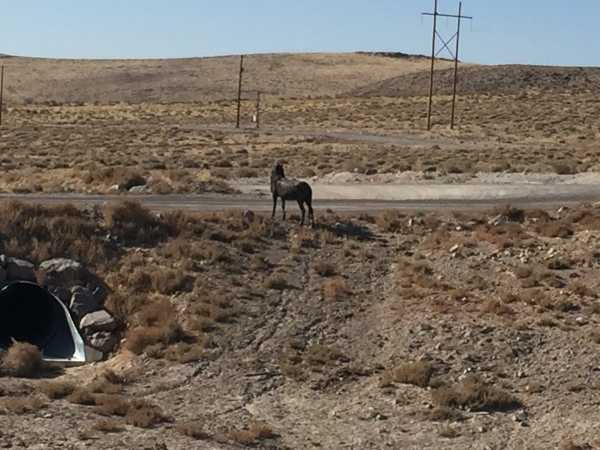
In the scenario illustrated above, it was not practical to halter a wild horse. Once she regained full use of her faculties, removing the halter and lead would have been problematic. The responders simply took up positions to discourage her from drifting back toward the pond until she was clear of the area.
When packaging a horse for transport, it is often easiest to slip the Rescue Glide under the horse while it is still in the water, using its natural buoyancy to our advantage. Then the horse and glide can be brought up on shore for the horse to be secured to the glide for transport.
The Rescue Glide is positioned at the water's edge.
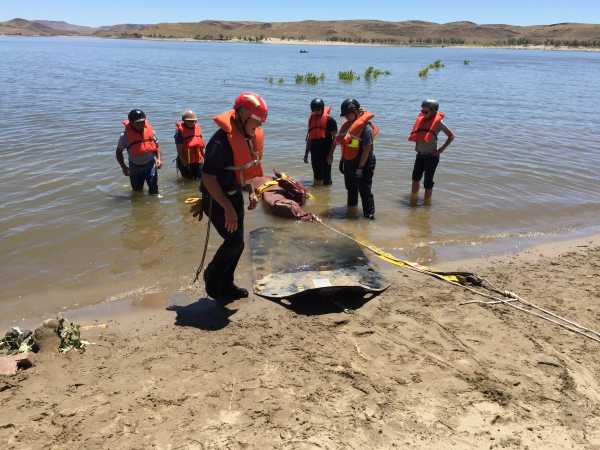
Drawing the horse up onto the glide.
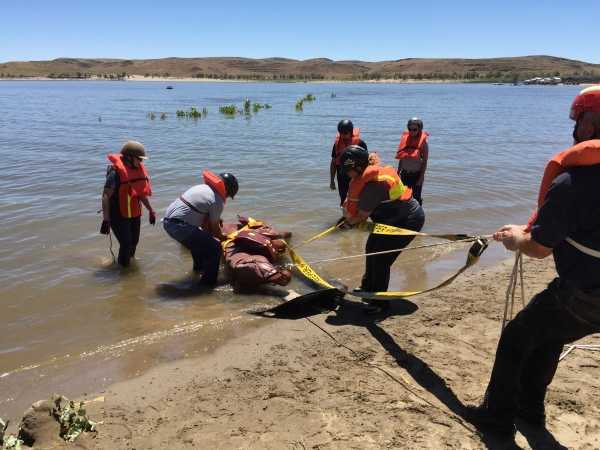
Starting the packaging process.
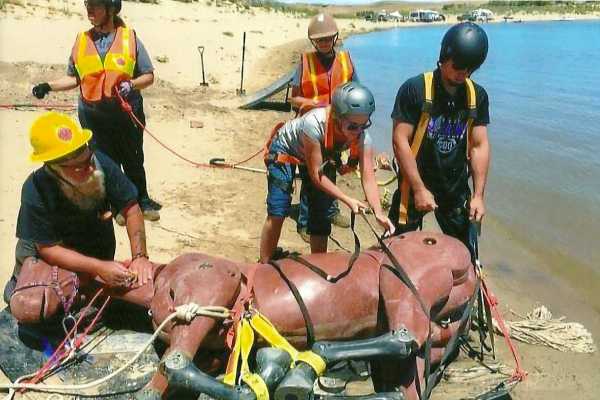
Application in an actual water response.
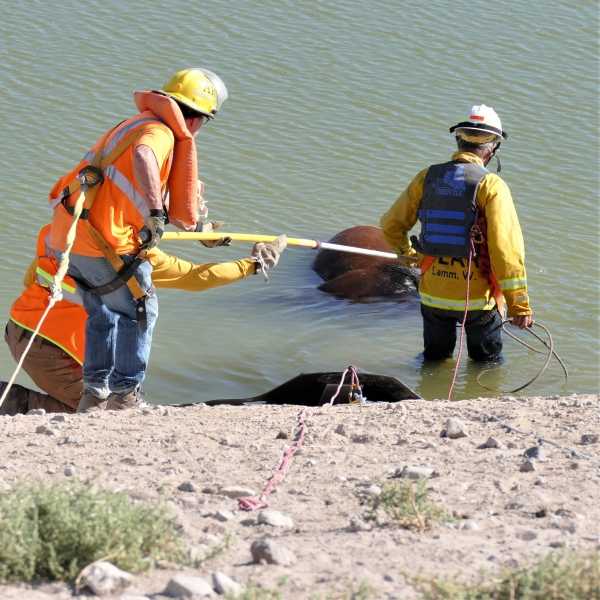
Note: Any horse that was not the victim of a simple bogging, and especially those that have been stranded for a significant amount of time, should be examined by a competent veterinarian. The effects of hypothermia may not present themselves for two to three days after exposure at which point the condition may be fatal. Stabilizing an animal's core temperature as quickly as practicable while minimally handling the animal can be the critical factor.
An Information Sheet that discusses proper packaging techniques can be viewed
Here
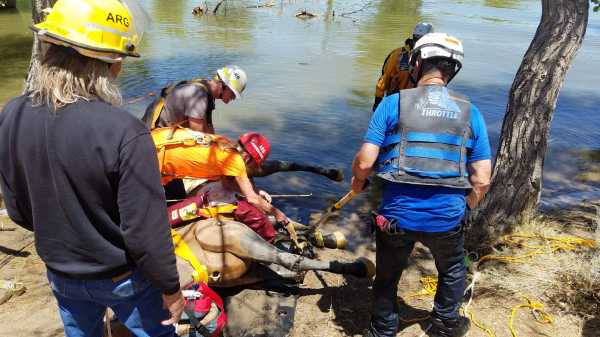
| 

